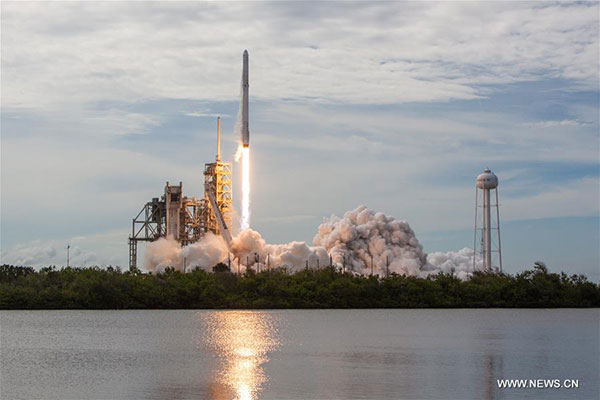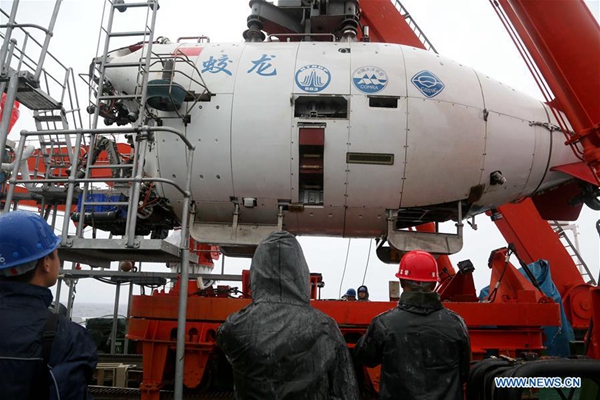|

|
|
The photo made available by U.S. space firm SpaceX on June 3, 2017 shows the company’s Falcon 9 rocket launching at the Kennedy Space Center in Florida, the United States. [Photo/Xinhua]
|
When the SpaceX Dragon capsule docks with the International Space Station tomorrow, it will be carrying equipment for the first experiment to have been independently designed by China.
A research project by the Beijing Institute of Technology aims to investigate how the space environment affects DNA, said Deng Yulin, a life sciences professor with the institute.
It will study gene mutation, one of the biggest risks to astronauts working in space, as they are exposed to 10 times the radiation than on earth, he said.
PrevioU.S.ly, equipment for space experiments was sent via China’s 2011 launch of the Shenzhou-8 spacecraft, its 2016 lift by a Long March-7 rocket and via China’s cargo spacecraft Tianzhou-1 this year.
“The research team caught evidence of the gene mutation after the first experiment via Shenzhou-8, which proves the space environment can caU.S.e DNA mutation and biomolecular changes,” Deng said.
The project on the ISS will continue to study whether gene mutation follows any rules in a space radiation and microgravity environment, he said.
The Chinese payload was first reported in 2015, when an agreement was reached with NanoRacks, a HoU.S.ton-based company that offers services for the commercial utilization of the space station.
Under the agreement, NanoRacks will deliver the device to the U.S. side of the space station and astronauts there will conduct studies using the device, data from which will be sent back to the Chinese researchers.
There is a U.S. law, known as the Wolf amendment, banning cooperation between U.S. space agency NASA and Chinese government entities, but this deal is purely commercial and therefore considered legal.
NASA spokeswoman Kathryn Hambleton said, “NASA complied with all legal requirements to notify the Congress of this activity, and all of the ISS partners approved the inclU.S.ion of the experiment.
Professor Deng said, “This is a new model of cooperation that we can follow in the future.”
Leroy Chiao, a former Chinese-American NASA astronaut and ISS commander, highlighted the significance of the Chinese project.
“I think this is a good step forward,” Chiao said. “I have always believed that cooperation is the best way forward for both the U.S. and China, particularly using civil space exploration as an avenue.”
Joan Johnson-Freese, a space policy analyst at the U.S. Naval War College, said that it evidences the growing importance of commercial space.
“Space is no longer just the purview of government activity,” Johnson-Freese said. “Space is developing as an area of commercial activity, much like cars and computers, which is a big change from the past.”
The SpaceX mission is the 11th of up to 20 trips to the space station the California-based company will fly for NASA.
The Dragon spacecraft lifted off on SpaceX’s Falcon 9 rocket from the Kennedy Space Center in Florida at 5:07pm on Saturday.
About 10 minutes later, SpaceX successfully landed the rocket’s first stage at the company’s Landing Zone 1, jU.S.t south of the launch site at Cape Canaveral Air Force Station, as part of its effort to develop fully reU.S.able rockets.

